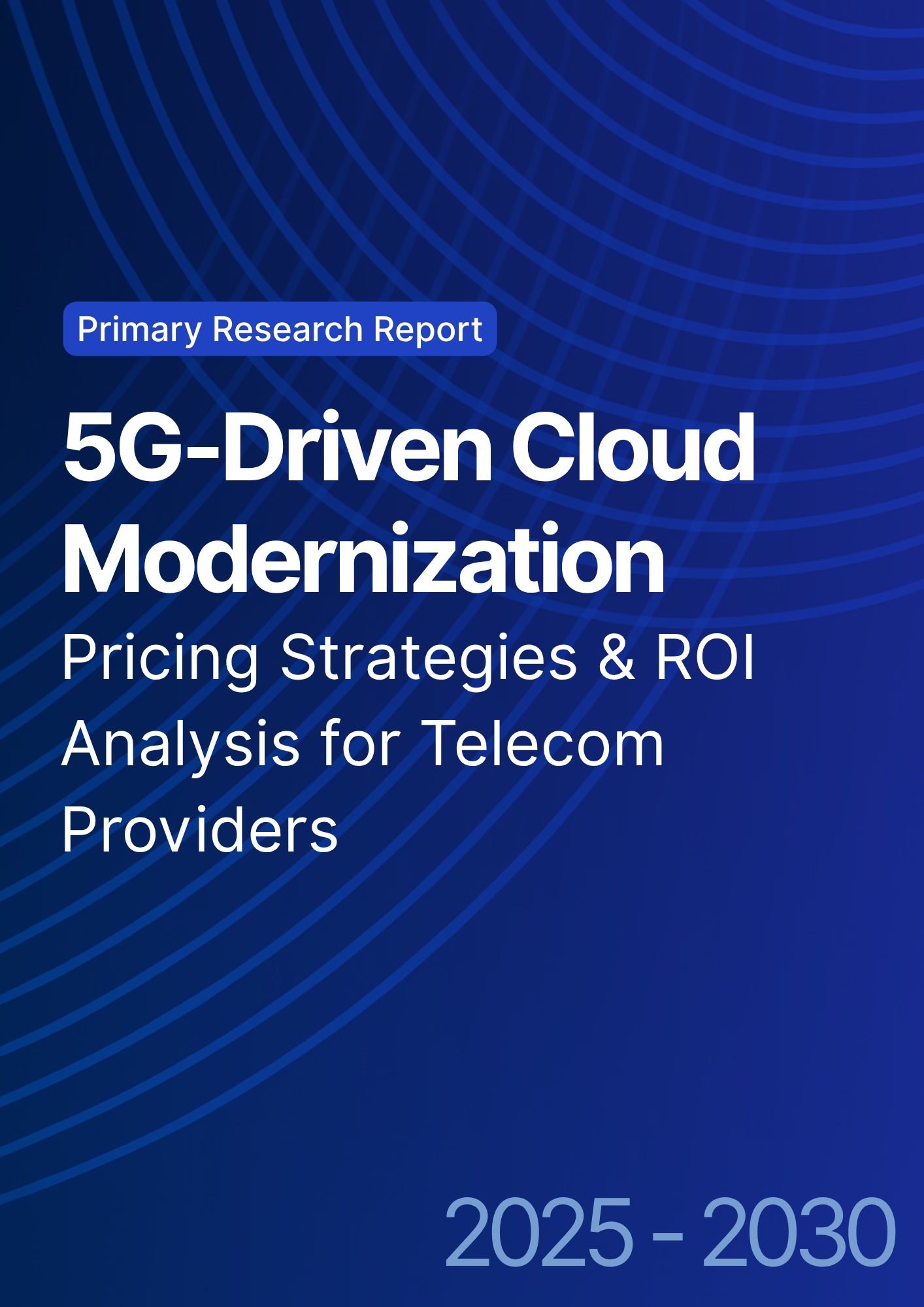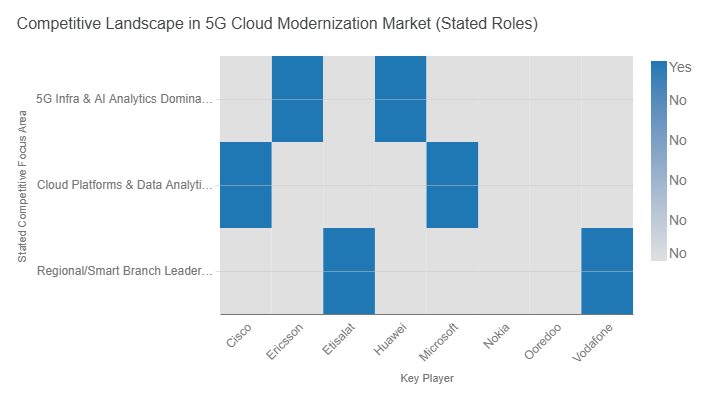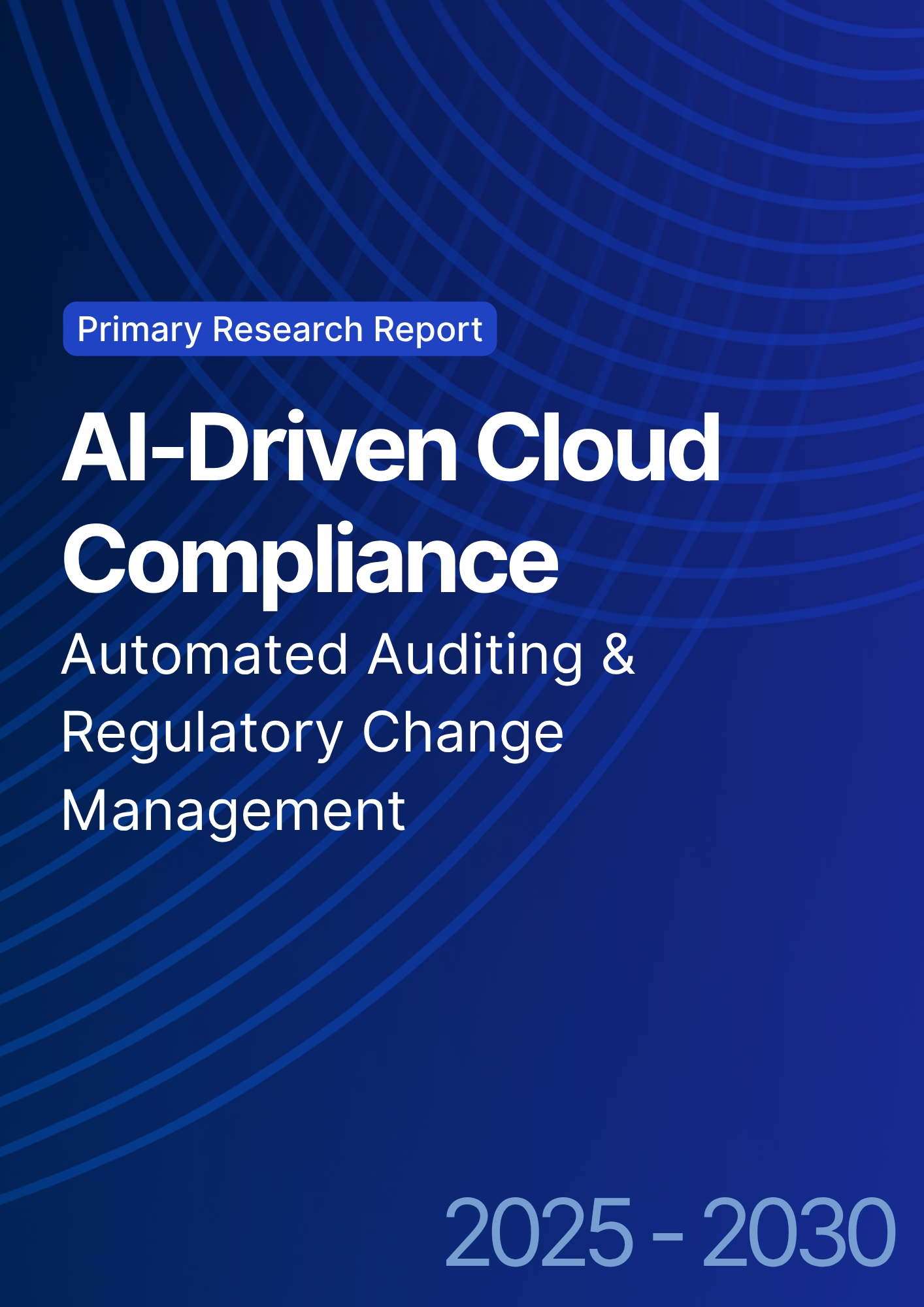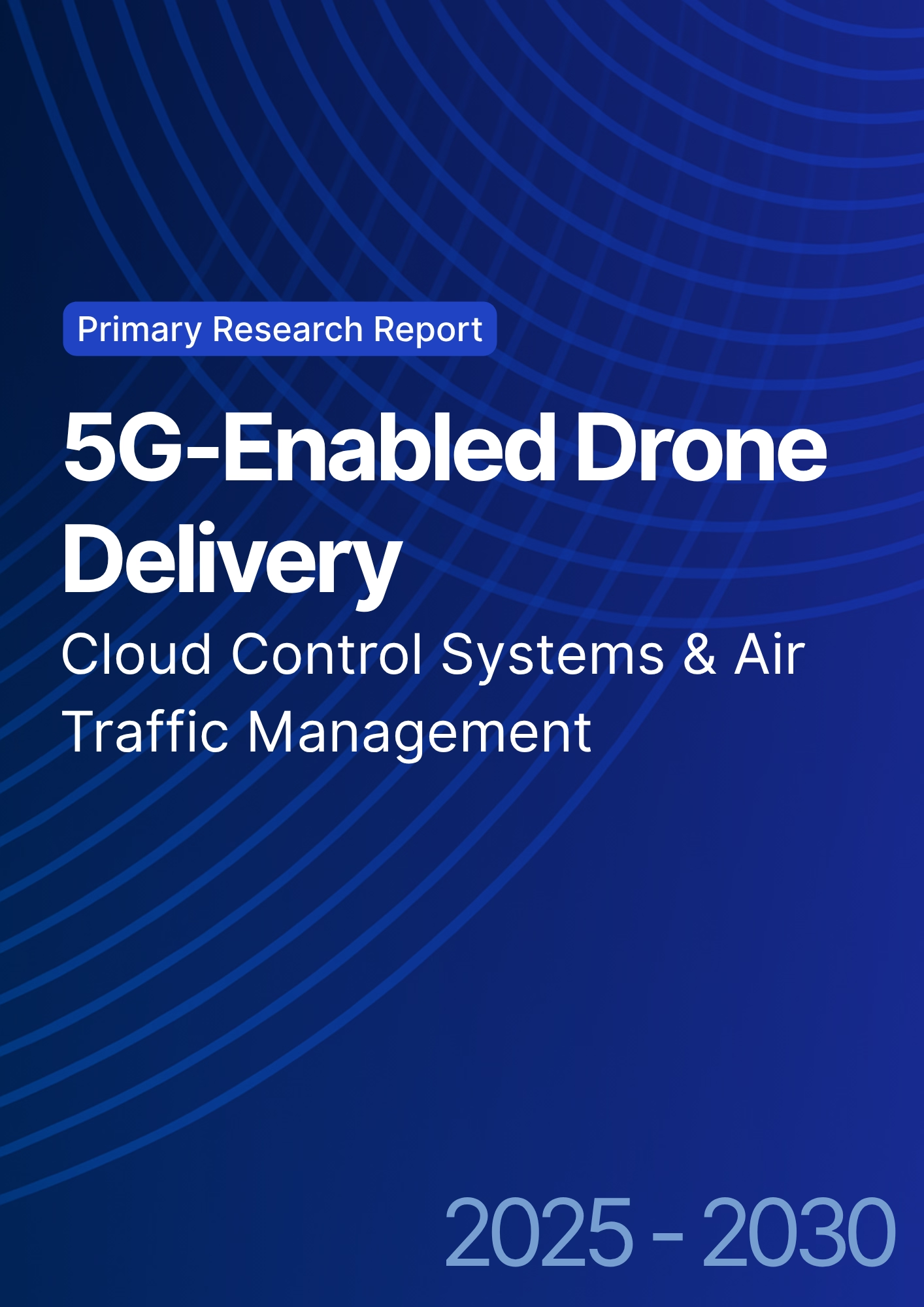

68 Circular Road, #02-01 049422, Singapore
Revenue Tower, Scbd, Jakarta 12190, Indonesia
4th Floor, Pinnacle Business Park, Andheri East, Mumbai, 400093
Cinnabar Hills, Embassy Golf Links Business Park, Bengaluru, Karnataka 560071
Connect With Us
5G-Driven Cloud Modernization: Pricing Strategies & ROI Analysis for Telecom Providers
The 5G-driven cloud modernization market for telecom providers in Egypt and the Middle East is projected to grow from $3.8B in 2025 to $10.6B by 2030, reflecting a CAGR of 22.3%. By 2030, telecom providers in the region will adopt 5G cloud infrastructure to optimize network performance, reduce operational costs, and enhance service offerings. The market’s growth will be driven by new pricing models based on usage-based and capacity-based strategies. The ROI from cloud modernization is expected to improve telecom service delivery by 15-20% annually, as providers leverage AI-driven analytics, edge computing, and network slicing for better scalability and service innovation.

What's Covered?
Report Summary
Key Takeaways
- Market size: $3.8B → $10.6B (CAGR 22.3%).
- Cloud modernization to drive network efficiency and cost savings of up to 25%.
- 5G cloud integration expected to improve telecom service delivery by 15-20% annually.
- Egypt and UAE will lead the region in 5G cloud adoption, accounting for 60% of market share.
- Telecom providers to implement usage-based pricing models for cloud services by 2027.
- Edge computing and network slicing will drive 25% improvement in network latency.
- AI-driven analytics will reduce downtime by 30% and enhance predictive maintenance.
- 5G-enabled cloud networks will optimize data traffic by 40% by 2030.
- ROI on cloud modernization expected to be 35% higher due to improved network agility.
- Telecom infrastructure investments in 5G cloud services to surpass $6B by 2030.
Key Metrics
Market Size & Share
The 5G-driven cloud modernization market for telecom providers in Egypt and the Middle East is expected to grow from $3.8B in 2025 to $10.6B by 2030, achieving a CAGR of 22.3%. The UAE and Egypt will account for 60% of the market share, driven by large-scale cloud infrastructure investments and telecom upgrades in line with national 5G rollout plans. By 2030, 5G-enabled cloud services will drive significant improvements in network agility, data traffic optimization, and customer service offerings. With AI-driven automation and edge computing, telecom companies will enhance their ability to manage heavy data loads, reducing latency by 25% and offering real-time insights for better decision-making.
Market Analysis
The market for 5G-driven cloud modernization in telecom is experiencing rapid growth, particularly in Egypt and the UAE, which are spearheading regional efforts to upgrade telecom infrastructure. By 2030, 70% of telecom providers in these markets will have adopted 5G cloud networks, benefiting from real-time analytics and network slicing to provide higher-quality services. The integration of AI-driven predictive maintenance will also reduce downtime by 30%, significantly improving operational uptime and customer satisfaction. As telecom providers move from traditional network models to 5G-driven cloud solutions, cost savings of 25% are expected, while service delivery improvements of 15-20% will lead to higher profit margins.

Trends & Insights
- 5G Cloud Adoption: UAE and Egypt lead with 60% of market share in cloud modernization.
- Edge Computing & Network Slicing: 25% improvement in network latency and service responsiveness.
- AI-Driven Analytics: Reducing downtime by 30% and improving predictive maintenance capabilities.
- Data Traffic Optimization: 40% increase in data throughput by integrating 5G cloud infrastructure.
- Customer Engagement: 15-20% improvement in service delivery through real-time data analytics.
- Subscription-Based Pricing Models: Adoption of usage-based pricing for telecom services by 2027.
- Cost Savings: 25% reduction in network operational costs through cloud transformation.
- Competitive Edge: Providers implementing 5G-driven cloud solutions gain a 25% advantage in market share.
- Sustainability: Adoption of green computing for 5G infrastructure leads to 15% energy savings.
- Regulatory Compliance: EU regulations such as GDPR influencing data management standards in 5G cloud services.
These insights underscore the importance of 5G cloud integration as the primary strategy for telecom providers looking to optimize their networks, enhance customer satisfaction, and remain competitive in a rapidly evolving market.
Segment Analysis
The market is segmented into cloud infrastructure (50%), network optimization (25%), AI-driven analytics (15%), and edge computing (10%). Cloud infrastructure, which represents 50% of the market, is the dominant driver, as telecom companies modernize their systems to handle high-volume data traffic and provide seamless service delivery. Network optimization accounts for 25%, focusing on improving speed and reliability through AI and 5G technologies. AI-driven analytics, at 15%, enhances customer insights, helping providers increase retention and personalize offerings. Finally, edge computing, comprising 10%, is critical for reducing latency and enabling real-time decision-making for service operations.

Geography Analysis
UAE and Egypt are the largest markets in the Middle East for 5G-driven cloud modernization, with the UAE contributing 30% and Egypt 30% of the regional market share. Saudi Arabia and Qatar follow with 20%, driven by strong telecom infrastructures and government-led investments in 5G networks. By 2030, UAE is expected to lead in 5G cloud adoption with a focus on smart cities, while Egypt will grow as a key hub for data centers and cloud service providers in the region. North Africa and Southeast Asia will also benefit from cross-border integration and 5G-enabled services, supporting global telecom connectivity.
Competitive Landscape
Key players in the 5G cloud modernization market include Huawei, Ericsson, Nokia, Cisco, and Microsoft, along with regional leaders like Etisalat, Ooredoo, and Vodafone. Huawei and Ericsson dominate in providing 5G infrastructure solutions that enable telecom operators to integrate cloud services and AI-based analytics. Etisalat and Vodafone are leading the way in UAE and Egypt, developing next-gen smart branch ecosystems. Microsoft and Cisco are expanding their roles in providing cloud platforms and data analytics for telecom providers looking to optimize their 5G networks. Competition will intensify as AI-driven cloud services continue to evolve, offering more customized service models for consumers and enterprises.

Report Details
Proceed To Buy
Want a More Customized Experience?
- Request a Customized Transcript: Submit your own questions or specify changes. We’ll conduct a new call with the industry expert, covering both the original and your additional questions. You’ll receive an updated report for a small fee over the standard price.
- Request a Direct Call with the Expert: If you prefer a live conversation, we can facilitate a call between you and the expert. After the call, you’ll get the full recording, a verbatim transcript, and continued platform access to query the content and more.


68 Circular Road, #02-01 049422, Singapore
Revenue Tower, Scbd, Jakarta 12190, Indonesia
4th Floor, Pinnacle Business Park, Andheri East, Mumbai, 400093
Cinnabar Hills, Embassy Golf Links Business Park, Bengaluru, Karnataka 560071
Request Custom Transcript
Related Transcripts
$ 1350


68 Circular Road, #02-01 049422, Singapore
Revenue Tower, Scbd, Jakarta 12190, Indonesia
4th Floor, Pinnacle Business Park, Andheri East, Mumbai, 400093
Cinnabar Hills, Embassy Golf Links Business Park, Bengaluru, Karnataka 560071













